The Orion Nebula
Click on image for full size
NASA
Nebulae - The Dust of Stars
Why would we call nebulae stardust? Because the gas of which they are
composed both creates and is created by stars. Stars are composed of
very dense, high temperature gas. Nebulae are also composed of gas,
but they are cooler and less dense. Water is at least
1,000,000,000,000,000 times as dense as the gas found in nebulae.
Nebulae come in a variety of shapes. But their appearance is usually
linked to the energy source which is lighting them up. For every
region of gas which we can detect in the optical region of the
spectrum, much more gas exists which is not easily visible. Something
must happen for the nebulae to reveal themselves.
So, what happens to make nebulae glow? It depends on the type of
nebulae. Some are involved in the formation of new stars. These are
stellar nurseries called HII
regions. The young stars found in HII regions are extremely hot
and provide a lot of energy for lighting up nebulae. Some nebulae are
the products of stellar death: supernova
remnants and the planetary nebulae surrounding white dwarfs.
Some types of gas clouds are not visible in the optical regions of the
electromagnetic spectrum. We need to explore some other wavelengths
to observe these type of gas clouds. For example, neutral
hydrogenemits energy in the radio region of the electromagnetic
spectrum. Dust absorbs the optical and ultraviolet light of stars and
re-emits it as infrared radiation.
You might also be interested in:
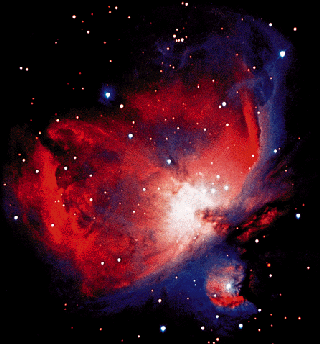
The Sun and planets began as just another molecular cloud in space, sort of like the one shown in this picture. Most likely the cloud was made primarily of hydrogen and helium gas, with some other molecules
...more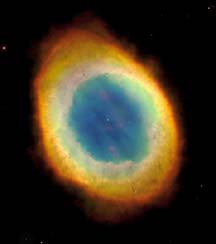
Scientists have used the Hubble Space Telescope to take a closer look at the Ring Nebula (also known as M57). The nebula was discovered over two hundred years ago but scientists have found something new.
...more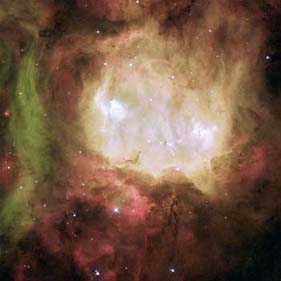
Looking like a colorful holiday card, this image from NASA's Hubble Space Telescope reveals a vibrant green and red nebula far from Earth, where nature seems to have put on the traditional colors of the
...more
The muppets are back! Those wacky film stars have returned for yet another movie, entitled "Muppets From Space". The film concentrates on finding Gonzo's real home. When his food speaks to him, Gonzo
...more
The pictures released by Hubble Space Telescope's new Advanced Camera for Surveys (ACS) are nothing but FAR OUT! This new camera was installed on Hubble during a servicing mission in March 2002. As can
...more
Scientists are finding strong evidence thatspiral galaxies have collisions or near collisions more often than once thought. It was originally believed that one third of all the spiral galaxies have experienced
...more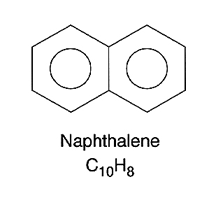
PAH is the short name for a "polycyclic aromatic hydrocarbon". A PAH is a stable structure made up of multiple rings that are fused together. The rings are made of carbon and hydrogen (though other elements
...more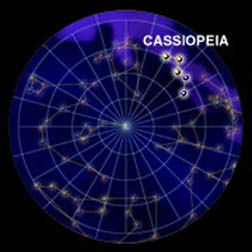
Cassiopeia was the wife of King Cepheus. She was very pretty, and would often boast that she and her daughter were more beautiful than the sea nymphs, the Nereids. They complained to Poseidon, who unleashed
...more














